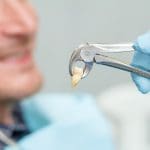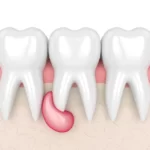Orthognathic surgery, commonly known as jaw surgery, is a specialized procedure aimed at correcting significant irregularities in the jawbones and facial structure. These conditions can affect a person’s appearance, ability to chew, speak, and breathe properly. This comprehensive article will delve into the various aspects of orthognathic surgery, including the reasons for undergoing the procedure, the evaluation process, surgical techniques, recovery, and potential risks and benefits.
Understanding Orthognathic Surgery
Orthognathic surgery is a complex surgical procedure that involves repositioning the upper jaw (maxilla), lower jaw (mandible), or both to correct a range of skeletal abnormalities. The primary goal of this surgery is to achieve facial harmony and proper dental occlusion (bite alignment). Jaw irregularities can arise from a variety of factors, such as congenital conditions, facial trauma, or developmental issues. The surgery is often considered when other orthodontic treatments fail to provide satisfactory results.
Indications for Orthognathic Surgery
There are several conditions that may prompt a patient to consider orthognathic surgery:
- Malocclusion
- Facial Asymmetry
- Sleep Apnea
- Temporomandibular Joint (TMJ) Disorders
- Open Bite or Crossbite
Malocclusion
This refers to an improper alignment of the teeth when the jaws are closed together, leading to difficulty in chewing, biting, and speaking.
Facial Asymmetry
When the facial features are noticeably imbalanced, orthognathic surgery can help create a more harmonious appearance.
Sleep Apnea
For some patients with obstructive sleep apnea, orthognathic surgery may be recommended to improve airway patency and alleviate breathing difficulties during sleep.
Temporomandibular Joint (TMJ) Disorders
Severe jaw discrepancies can lead to TMJ disorders, causing pain, discomfort, and difficulty in jaw movement.
Open Bite or Crossbite
These bite irregularities can be corrected through orthognathic surgery to improve chewing and speech.
The Evaluation Process
Before proceeding with orthognathic surgery, a thorough evaluation is conducted, which involves:
- Medical History
- Physical Examination
- Imaging
- Dental Assessment
- Orthodontic Evaluation
Medical History
The surgeon reviews the patient’s medical history, previous surgeries, medications, and any existing health conditions.
Physical Examination
A comprehensive examination of the face, jaws, and teeth is performed to identify the specific jaw irregularities.
Imaging
Advanced imaging techniques, such as X-rays, CT scans, and 3D imaging, help create detailed models of the facial bones, allowing the surgeon to plan the surgery accurately.
Dental Assessment
The dentist assesses the dental occlusion, tooth alignment, and overall oral health to determine the necessary corrections.
Orthodontic Evaluation
An orthodontist evaluates the alignment of the teeth and may provide preliminary orthodontic treatment before surgery to improve the final outcome.
Preparing for Orthognathic Surgery
The preparation phase for orthognathic surgery is crucial to ensure a successful outcome and a smooth recovery. Here are some key steps involved:
- Psychological Evaluation
- Pre-Operative Orthodontics
- Communication with the Surgical Team
- Lifestyle Changes
Psychological Evaluation
Undergoing jaw surgery is a significant decision that can have a profound impact on a person’s life. A psychological evaluation may be conducted to assess the patient’s mental and emotional readiness for the procedure.
Pre-Operative Orthodontics
In many cases, the orthodontic treatment begins before the surgery. Orthodontic appliances such as braces are used to align the teeth and create the necessary space for the jaw repositioning.
Communication with the Surgical Team
Effective communication between the patient, surgeon, orthodontist, and any other medical professionals involved is essential. This ensures that all parties are aware of the treatment goals and can address any concerns or questions that arise.
Lifestyle Changes
Leading up to the surgery, the patient may be advised to make certain lifestyle changes, such as avoiding smoking and alcohol, as they can negatively impact the healing process.
Surgical Process – Step by Step
The surgical process for orthognathic surgery typically involves the following steps:
- Anesthesia
- Incisions
- Osteotomy
- Repositioning
- Fixation
- Closing Incisions
- Soft Tissue Adjustments
Anesthesia
The surgery is performed under general anesthesia to ensure the patient is comfortable and unaware of the procedure.
Incisions
The surgeon makes incisions inside the mouth, often along the gum line, to access the jawbones. This approach leaves no visible external scars.
Osteotomy
The carefully planned cuts are made in the jawbones, allowing the surgeon to move them into the desired position.
Repositioning
The surgeon moves the jawbones according to the treatment plan, correcting any discrepancies and improving facial aesthetics and function.
Fixation
To hold the repositioned bones in place while they heal, small screws, plates, or wires are used.
Closing Incisions
Once the jawbones are stabilized, the incisions are closed with dissolvable sutures.
Soft Tissue Adjustments
In some cases, the surgeon may make minor adjustments to the soft tissues around the jawline to achieve better facial balance.
Recovery and Post-Operative Care
After the surgery, patients can expect a recovery period that typically lasts several weeks. Some key aspects of the recovery process include:
- Hospital Stay
- Pain Management
- Swelling and Bruising
- Diet
- Oral Hygiene
- Follow-up Visits
- Gradual Resumption of Normal Activities
Hospital Stay
Depending on the complexity of the surgery, patients may need to stay in the hospital for a day or two.
Pain Management
Pain medication is prescribed to alleviate discomfort during the initial stages of healing.
Swelling and Bruising
Swelling and bruising are common after surgery but should gradually improve over time.
Diet
A soft-food or liquid diet is usually recommended during the initial weeks to avoid stressing the healing jawbones.
Oral Hygiene
Proper oral hygiene is crucial during the recovery period to avoid infections. Gently rinsing the mouth with a saltwater solution may be advised.
Follow-up Visits
Regular follow-up visits with the surgeon and orthodontist are essential to monitor progress and adjust orthodontic appliances as needed.
Gradual Resumption of Normal Activities
Patients are advised to gradually resume regular activities and exercise as the healing progresses, following the surgeon’s instructions.
Risks and Benefits
Like any surgical procedure, orthognathic surgery carries certain risks, including infection, bleeding, nerve damage, and adverse reactions to anesthesia. However, when performed by skilled surgeons and followed by proper post-operative care, the benefits of orthognathic surgery often outweigh the risks. Some of the benefits include:
- Improved Aesthetics
- Better Functionality
- Enhanced Oral Health
- Relief from Discomfort
Improved Aesthetics
Orthognathic surgery can enhance facial balance and symmetry, boosting the patient’s self-confidence and self-esteem.
Better Functionality
Correcting jaw irregularities can significantly improve chewing, speaking, and breathing capabilities.
Enhanced Oral Health
Proper dental occlusion can reduce the risk of dental problems such as cavities and gum disease.
Relief from Discomfort
Patients suffering from TMJ disorders or obstructive sleep apnea may experience relief after orthognathic surgery.
Risks and Complications
While orthognathic surgery is generally safe and successful, there are potential risks and complications associated with the procedure. Some of these include:
- Infection
- Nerve Damage
- Healing Issues
- Relapse
- Aesthetic Dissatisfaction
Infection
There is a risk of infection at the surgical site, which can be managed with antibiotics if detected early.
Nerve Damage
In some cases, nerves around the jaw area may be affected, leading to temporary or, rarely, permanent numbness or altered sensation.
Healing Issues
Delayed bone healing or non-union may occur, requiring additional treatment.
Relapse
In some cases, there may be slight post-surgical changes over time, leading to a relapse of the jaw position. However, this is relatively uncommon.
Aesthetic Dissatisfaction
Although orthognathic surgery aims to enhance facial aesthetics, there may be instances where the patient is not completely satisfied with the results.
Conclusion
Orthognathic surgery is a highly specialized and effective procedure for correcting jaw irregularities and facial asymmetry. It can significantly improve both the aesthetics and functionality of the face, leading to enhanced self-confidence and overall well-being. The surgical process requires careful planning, teamwork between the surgical and orthodontic professionals, and a commitment to post-operative care. While there are potential risks associated with any surgical procedure, the benefits of orthognathic surgery often outweigh them, making it a viable option for those with significant jaw discrepancies. If you are considering orthognathic surgery, consult with an experienced oral and maxillofacial surgeon and orthodontist to determine the best course of action for achieving your treatment goals. Remember, each patient’s case is unique, and a personalized approach is key to successful outcomes.





